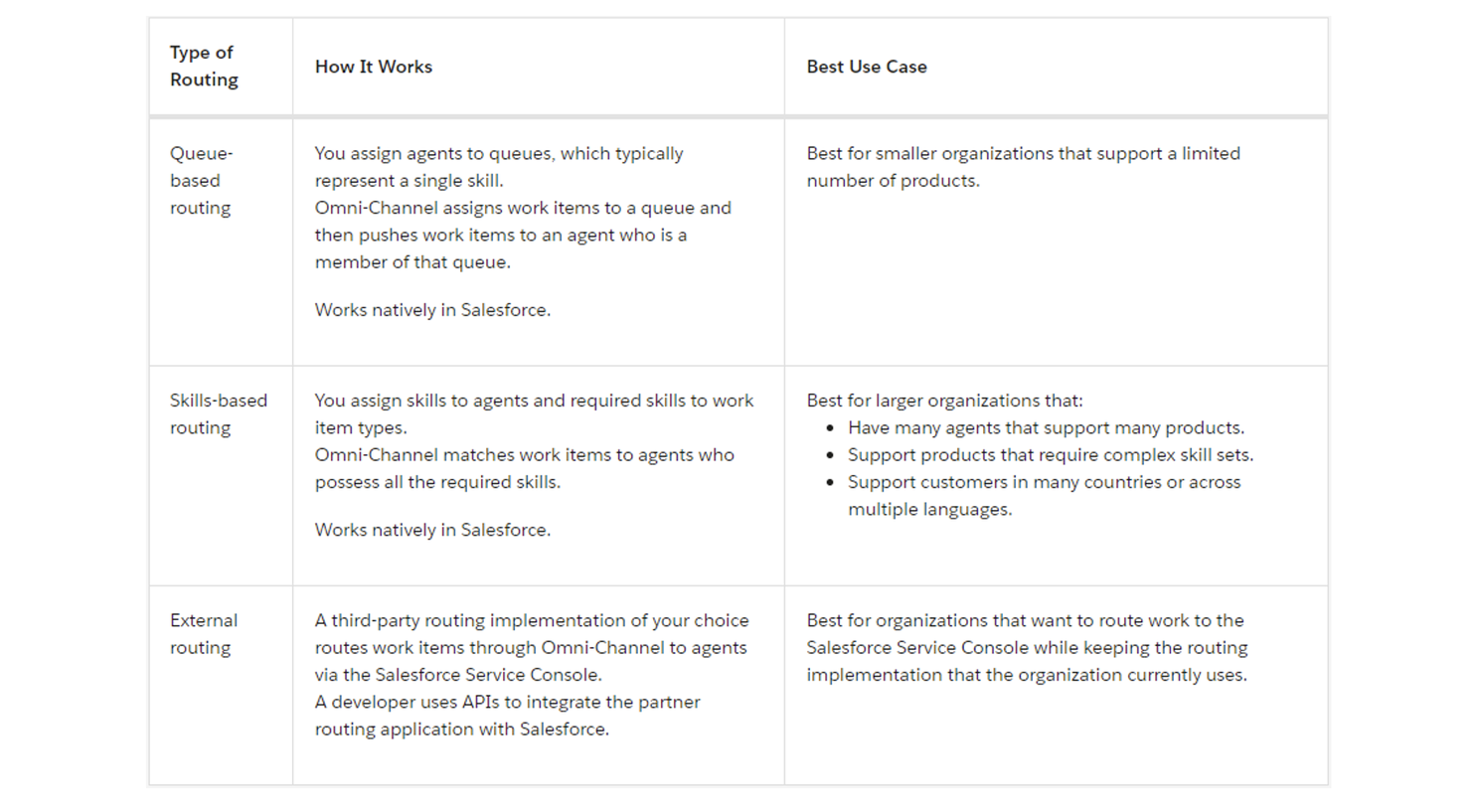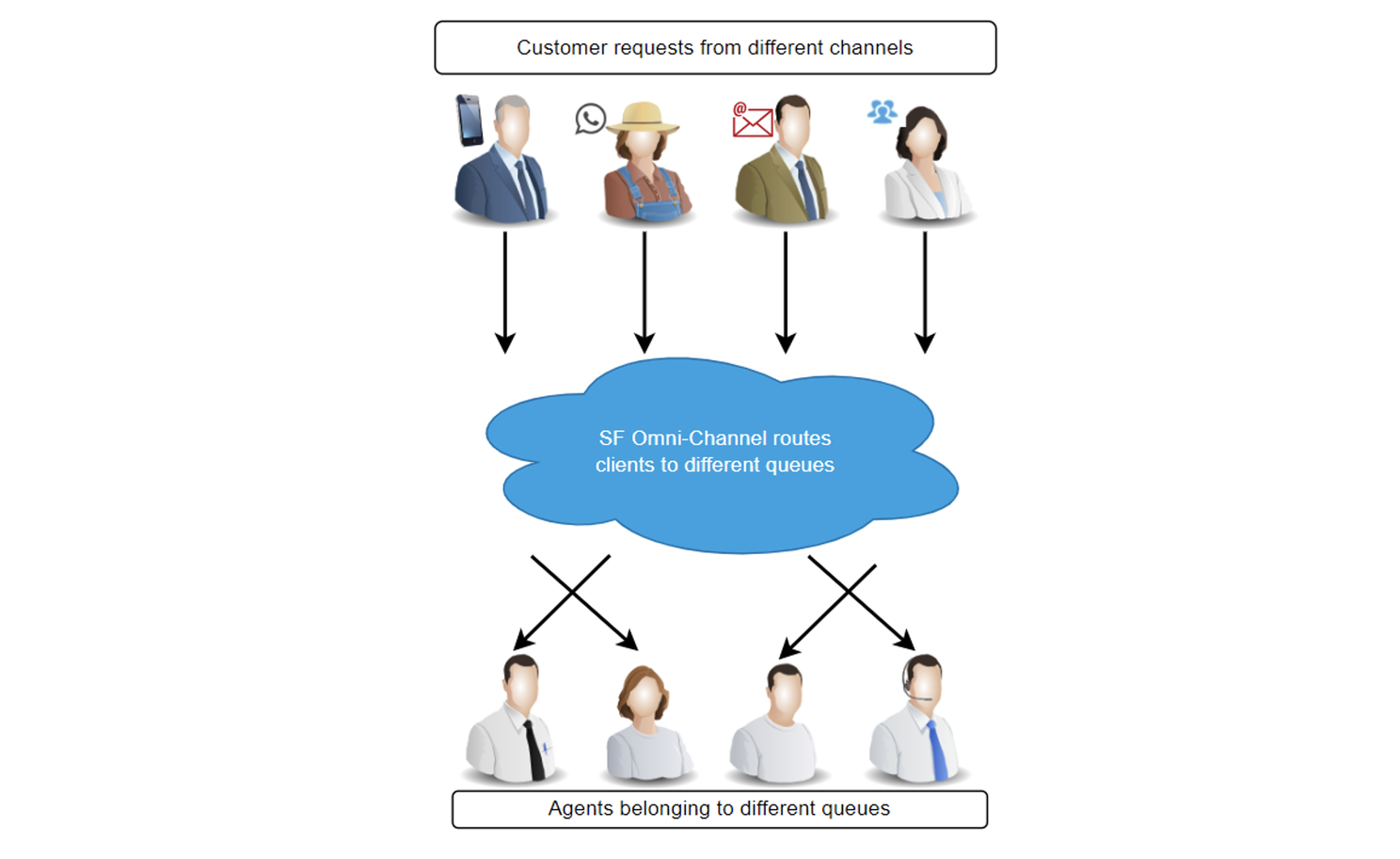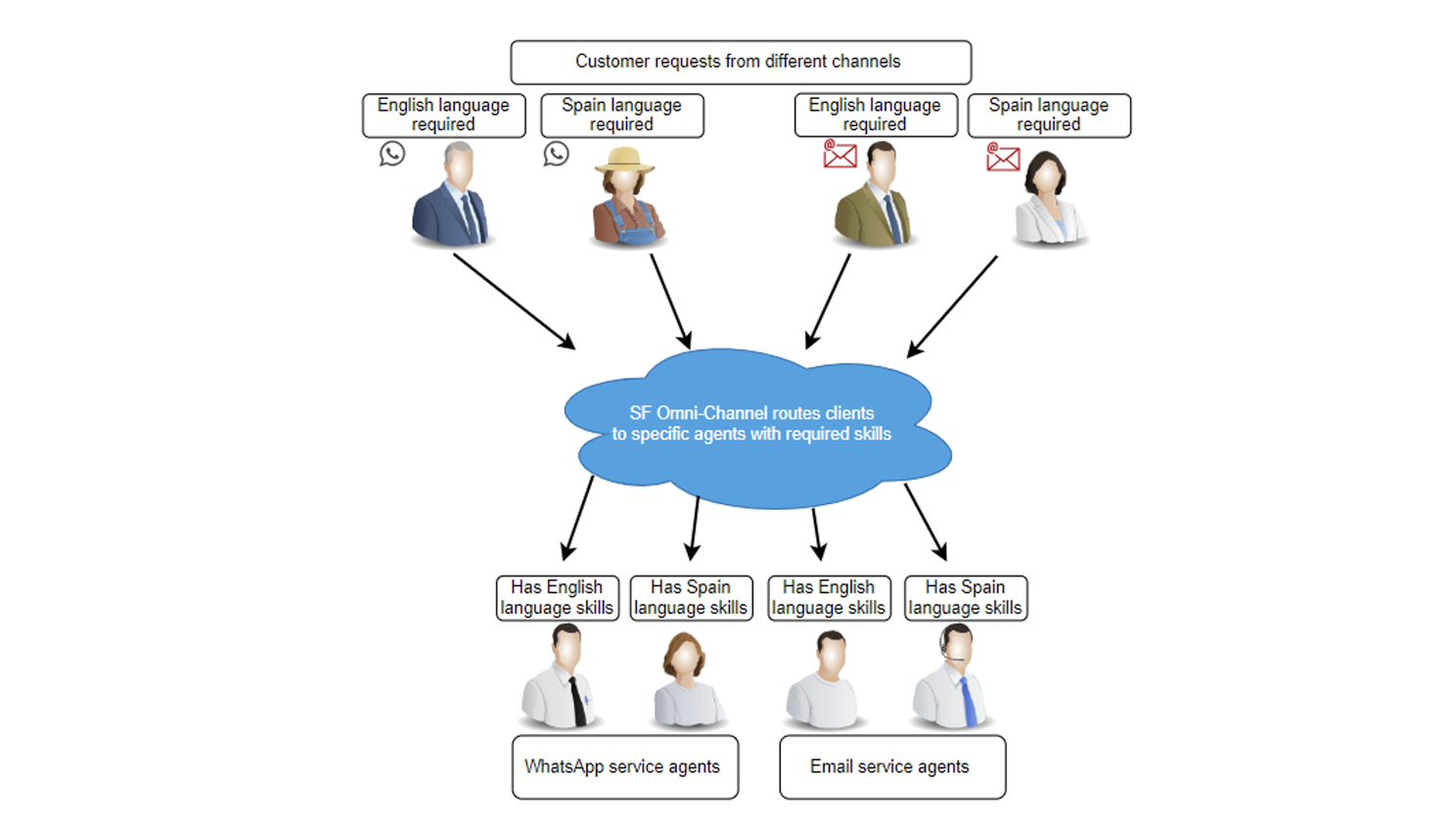
Omni-Channel Overview in 2024
Omni-Channel is a Customer Service and console-based Salesforce feature that helps automatically route of different types of work items (such as Leads and Cases) to agents. Omni Channel routes all the work items to the agents automatically based on the agent’s capacity, priority, skillset, and etc.
How many ways can customers contact your organization for support? Phone, email, SMS, WhatsApp – and what about web chat, social media, etc.? You want to offer all these to open up the two-way conversation, but what impact will this have on your service operations?
Omni-Channel is a ‘win-win’. For the customer, they are satisfied that their request has been acknowledged, and can get their query resolved faster, with the appropriate approach. For your agents, they’ll no longer be required to juggle customer requests coming in from all different directions, leading to a more fulfilling role.
Salesforce Omni-Channel: The Three Cs
Salesforce thinks of Omni-Channel in terms of what they call The Three Cs: Complete, Consistent, and Connected. With one view of all customer support requests, Service Managers and Salesforce Admins can plan out and activate a series of responses, regardless of the customer’s communication channel of choice. Do it once, do it right – then optimize these core service automation.
Beyond Omni-Channel, there are four critical aspects of customer service to ‘hit’ in order to be successful. Here’s how Omni-Channel plays a role in addressing each, head on:
- Responsiveness: Receive customer support requests (regardless of the communication channel) and respond rapidly with an appropriate next step. Could the customer self-serve leveraging support articles, or does this case need additional investigation from your support team? Not only does this keep customer satisfaction buoyant, but it also reduces customer churn (i.e. them cancelling your product or service). Keeping responses consistent, in relation to the cases’ severity, goes a long way in making the first response both fast and impactful.
- Utilization: Case routing involves more than simply assigning cases to agents. To assign support cases to the right people, at the right time, organizations use an assignment strategy (e.g. skills-based routing) or a combination of strategies to apply assignments with accuracy. Remember that agents could be tasked with juggling requests from multiple channels? Complexity shouldn’t be passed on to the agent; instead, receiving cases should be a seamless experience.
- Feedback: How customers perceive their service experience is a valuable data point to work into your interactions going forward. Often considered a ‘soft’ metric, feedback can be quantified and fed back into case routing. For example, if a customer gives poor feedback, the case could be automatically reopened and reassigned to a more senior agent for further attention. This helps get to the root cause of the customer’s troubles.
- Personalization: Being centralized to one customer record, agents and the automation that supports them, can gain insight from a wealth of data about the customer and/or their company – including past requests.
![]() Don't forget to check out: Drive Omnichannel Customer Experiences with Salesforce Interaction Studio
Don't forget to check out: Drive Omnichannel Customer Experiences with Salesforce Interaction Studio
Routings
Omni-Channel is flexible and gives several ways to route work items to agents. Let’s take a look at the different routing frameworks.

Queue-Based Routing
In queue-based routing, you organize your agents into different queues, which generally represent a single skill. A queue can support a particular product or a particular part of the business. For example, you can have a Billing Queue and a Financial Support Queue.
In queue-based routing, Omni-Channel assigns work to a queue. Agents are members of a queue, and Omni-Channel assigns work to agents based on the priority of the queue.
Smaller companies that operate in limited geographies and have fewer product offerings and agents often prefer queue-based routing because it’s simpler to set up.

The implementation of this type of routing is not custom, all functionality is configured using Salesforce declarative functions.
Skill-Based Routing
For a work item that requires specific skills, Omni-Channel routes the item to an agent who has all of the requisite skills and who has available capacity to take on the work.

When routing a work item, Omni-Channel determines the required skills based on the routing configuration, skills-based routing rules, and Omni-Channel flow. Skills defined in the routing configuration are added to all work items routed using that configuration. Skills defined in a skills-based routing rule or Omni-Channel flow are added if the work item meets the specified criteria. To match the right agent, Omni-Channel compares the required skills for the work item against the skills assigned to agents.
![]() Check out another amazing blog here by Vimera: A Comprehensive Guide for Small and Medium Businesses on Data Migration to Salesforce
Check out another amazing blog here by Vimera: A Comprehensive Guide for Small and Medium Businesses on Data Migration to Salesforce
When a work item is routed to a skill that multiple agents have, the work item is routed to the first available agent based on the routing type (most available or least active).
Skills are evaluated when a record, such as a case, is added to an Omni-Channel queue. If you edit a record that’s in an Omni-Channel queue, any changes to skills aren’t reflected until you reassign the record to the queue or another queue.
To continue reading, please visit our website.
This article is prepared by our Salesforce Developer Aliaksandr Kliazovich.




Responses